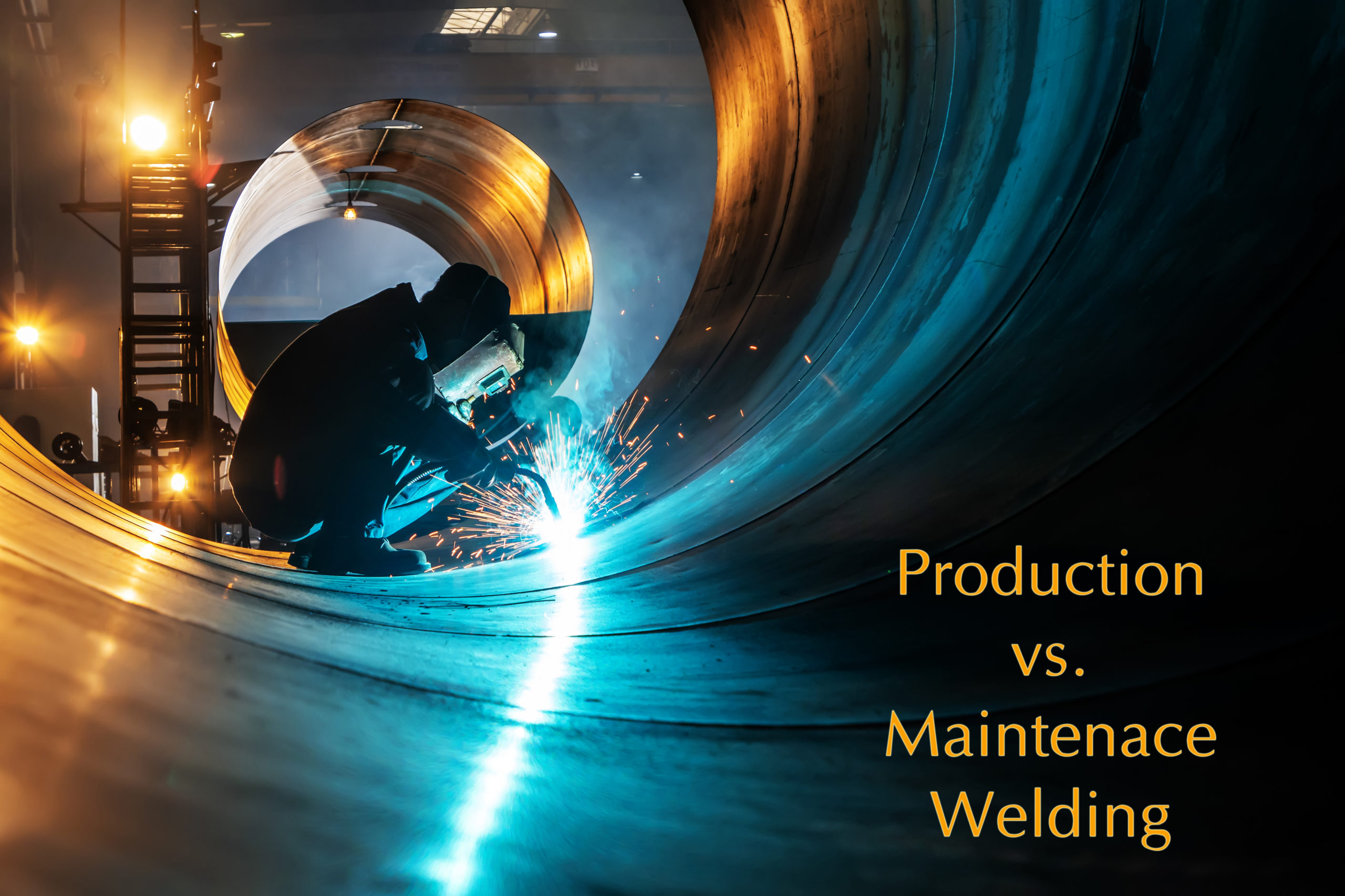
Welding is an in-demand job that is involved in nearly all types of construction work. It’s a profession that requires patience, training, and extensive skill to succeed. In the United States, welding jobs and similar jobs are growing with the national average of around 8 percent between 2020 and 2030, making it a stable and necessary job in the construction industries. It’s a great career to consider and there are a lot of different opportunities throughout the US, with ever-changing needs and projects available.
Many of the common items we find today would simply not exist without welding. From buildings to agriculture tools to transportation, welding is a critical component of our growth as a country. There are two types of welding applications, both of which require completely different skillsets and experience: production welding and maintenance welding.
Production Welding
Production welding is also known as fabrication or fabrication welding. Fabrication welding is creation welding– it utilizes various metals to create new components. The most common materials used for fabrication are primarily aluminum, steel, and cast iron, each of which produces different components and items. For example, aluminum and steel are commonly used for welding different components together in cars, whereas cast iron can be used for ornamental items and fencing, as one of the easiest items to connect through welding.
Production welding can at times be considered the easier of the two types of welding, due to the fact that there’s a plan in place. Parent metals are chosen, the welding environment is controlled, and a game plan is developed to determine how to proceed, what to weld, and the expected outcome.
Maintenance Welding
Maintenance welding is working on something that was meant to be durable, to which extensive wear and tear have caused damage that requires repair or reattachment. It’s always recommended that maintenance welders already have general production welding experience due to the variables that exist within maintenance welding.
Whereas production welding or fabrication deals with controllable factors, maintenance welding is the exact opposite. Maintenance welding requires skills such as identifying the parent metals, identifying the level of disassembly and repair required, and determining which products can best achieve the desired outcome.
Another consideration when maintaining welding is the cleanliness of the parent metals. Production welding typically works with new, clean metals, while maintenance welding deals with dirty or heat-affected metals. Over time, the surface area of metals is coated in oil, dirt, corrosion, rust, or oxidation that must be removed prior to welding. These impurities increase the difficulty of the repair, and proper metal preparation determines the success or failure of the repair work. For this reason, maintenance welders rely heavily on experience and skill (and the right set of maintenance welding equipment).
A third consideration when maintenance welding is that every job can be unique and sometimes the component is in out-of-the-way places that the welder needs to access. During the fabrication process, each component was built in iterations to produce the final product.
Imagine the numerous components of a car, and how it’s all combined together to make it run effectively. Now imagine having to try to go into one of the components that are now hard to reach due to how the construction was done. This adds to the level of complexity of the job.
To complicate matters worse, maintenance welders need a wide array of materials to cover the numerous variables mentioned above and they need to have these materials be adaptable to the current situation.
Without the right equipment, some unintentional side effects can occur, such as warping of the older metals, or not having the right flux paste when soldering electronics together.
Common styles that are used in maintenance welding (as well as production welding) are Gas Metal Arc Welding (GMAW) used for automotive and ship repairs as well as train repairs and pipe repairs, or Gas Tungsten Arc Welding (GTAW) which uses tungsten (an almost indestructible conduit) for the electrode and can handle extreme heat for those specialized jobs, especially when it’s about connecting steel to other metals such as aluminum.
Keep in mind this is just a small set of maintenance welding techniques and components used, and there are several others used for both maintenance and production fabrication.
Having the right equipment for the right job
Maintenance welding doesn’t need to be a daunting career choice, and we at Muggy Weld understand that. We are a premium supplier of several critical must-have components that will ease the mind of anyone experienced in maintenance welding.
We help provide components for on-the-fly situations such as our Cast Iron Repair Kit that covers both 77 and 72 electrodes to handle any situation, especially when burnt cast iron is in the equation. To add to our versatility, we also offer components such as our SSF-6 Silver Solder, one of the best tools to repair HVAC systems as well as plumbing and automotive components.
It’s all about preparation and having the right tools for the job. Skill and experience are important, but there’s nothing worse than having to perform maintenance welding and needing to do a subpar job simply due to the fact that the only thing lacking was not how the job was done, but what components were available for the job.
Once that’s understood, becoming any type of a welder, even one that focuses on maintenance welding, can be quite a fulfilling career, with various types of work, and freedom of movement for those that may want to switch it up every few years and try their hand at welding in a different state.
Keep in mind as well, as you grow as a welder, these can become some of the highest paying jobs in construction possible, the more specialized you become as a maintenance welder.